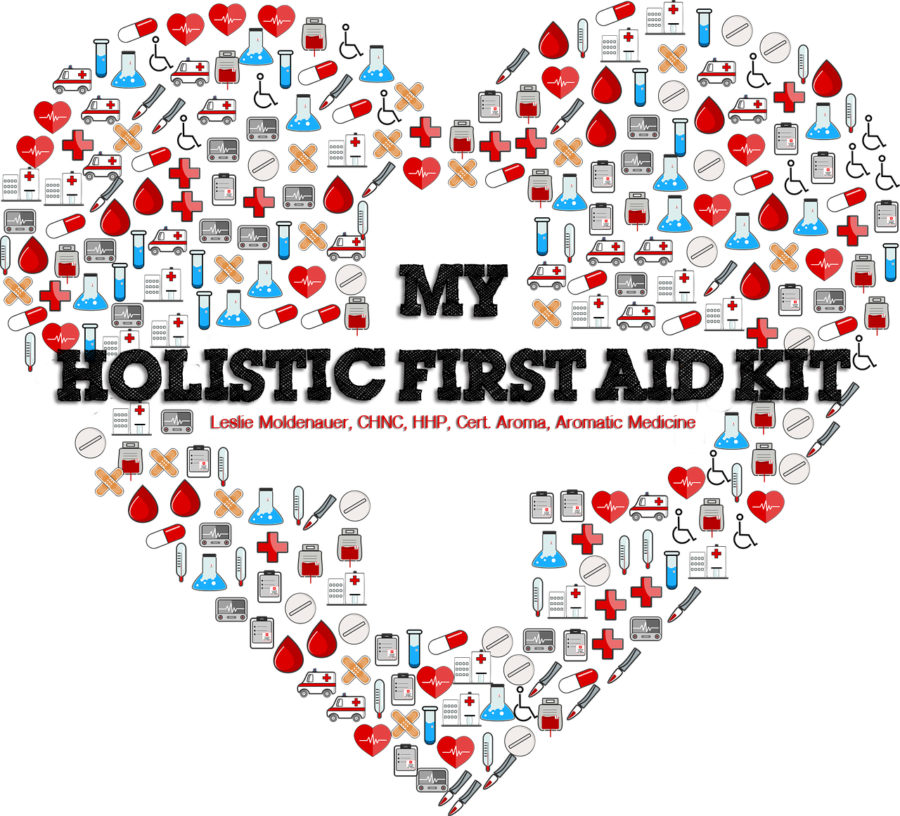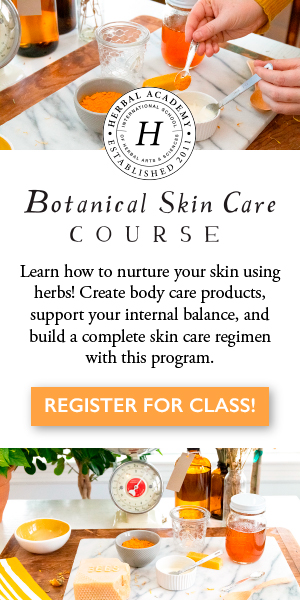The variety of choices for a holistic first aid kit is quite exciting for the DIY’er in you and goes well beyond essential oils. Just about anything can be handled well with holistic remedies, and there are a plethora of options. I will be going over at a few of those options today. If we have the choice of handling things at home and do not have to travel to a doctor’s office where there is oftentimes a myriad of germs, let’s give it a go, right? I think it is important to understand when getting medical care is needed, but it is not always needed. My Holistic First Aid Kit II
This is my 2nd installment of this popular blog, as there are so many exciting things to share. You can find the first version here.
Homeopathic Medicine
What is homeopathic medicine? The word homeopathy, which comes from the Greek language, through Latin, and into English, means “like disease”. The guiding principle of homeopathy is stated as “let likes cure likes” (1). The foundation of homeopathy states that if a substance can cause disease in healthy people it will cure those same similar symptoms in sick people. It can be compared to a vaccine, without all the additives that are very much a health concern. Homeopathic medicine comes in varying strengths, but they are all considered the “minimum dose”.
“Homeopathic medicines are prepared through a series of dilutions, at each step of which there is a vigorous agitation of the solution called succus on until there is no detectable chemical substance left. As paradoxical as it may seem, the higher the dilution, when prepared in this dynamized way, the more potent the homeopathic remedy. Thereby is achieved the minimum dose which, none the less, has the maximum therapeutic effect with the fewest side effects” (2).
It is important to note that there are literally hundreds of varieties of single doses and mixed doses of homeopathy. If one type is not working for you, it does not necessarily mean that homeopathy does not work, but that you do not have the proper remedy. And much like essential oil, homeopathy is not a simple fix for any ailment; it is meant to be complementary care.
I have a homeopathic kit with me at all times of varying sizes. I have one kit in my home, one in my car and a few vials in my purse. In my first article, I listed Arnica Arnica Montana and Nux Vomica. Those are my top two homeopathic remedies used, you can find out why here. But those are not the only ones I keep in the home.
I love the line called Kid’s Relief® (not an affiliate) (3). The remedies are liquid, so easily for littles to take, and I have found great benefits to a number of them (I have placed an asterisk next to the ones I have tried and like). Here is what they carry.
Allergy Oral Liquid*
With Calming Effect Medicine*
Colic Oral Liquid*
Cough and Cold Medicine*
Nighttime Cough and Cold Medicine*
Earache Oral Liquid
Flu Relief Flu Oral Liquid
Pain & Fever Relief Pain & Fever Oral Liquid
Teething Oral Liquid*
I have found great success with the Kid’s Relief® line, and they all taste good too.
Want to learn more about homeopathic remedies? Check out the information listed in the resources below.
*Want to know what dilution to go with? Follow this link for more information.
Herbs
I utilize my large storage space of herbs in a variety of ways in the home. I make many infused oils that sit in mason jars soaking up the summer sun like Arnica (Arnica Montana), Rose Hips (Rosa canina), and Calendula (Calendula officinalis). During the months that the sun is a bit farther out of reach, I utilize my crock-pot on the keep warm setting. I like soaking dried calendula flowers in an apricot carrier oil, sealing in a mason jar and placing in the sun a few hours daily (With calendula and any other herbal material, make sure it is fully dry to avoid spoilage). The jar should stay in the sun for an average of 4 weeks, shake often and continually make sure that there is no moisture present. Strain well, using cheesecloth and pour into sterilized bottles. Calendula infused oil is great for inflammation and pain, as well as scrapes, scratches, burns, and bites. I use this oil as a base for many of my other products as well. Calendula can be incorporated into baths, creams, compresses, washes, salves, ointments, massage oils, baths, facial steams, tinctures, and teas. It is also gentle enough to use for babies, children, or animals (4).
*Calendula is mentioned in my first article, but is so crucial and used so often that I needed to keep it here too.
There are times in a pinch where I forage for a fresh herb (what some consider a weed) for a quick remedy. Plantain (Plantago major) is one of my most often used weeds. You will likely be able to find it in your yard or your neighbor’s, and definitely growing out in the wild. In a pinch (bee sting crying child moment) I have grabbed a leaf of plantain, chewed it up to activate the juices of the leaf and placed the contents on the bite for immediate relief. Then used as a poultice to keep swelling down and pain at bay while it healed.
When not in a pinch, you can collect the leaves, clean and dry them, and use them in a tea/decoction for an upset stomach, and the leaves are super nutritious, tastes great fresh in a salad. You will likely be shocked with all of the uses for this common weed….NATURE IS AMAZING….read more about it here.
Another weed that I utilize when foraged for is Purslane (Portulaca oleracea). The leaves resemble a jade plant. I have actually been known to plant the seeds in my garden! If you want to try it, just be sure not to let it go to seed, or you will have a really hard time controlling it. You will want to pick the young leaves and eat them. They are incredibly nutritious (5).
Purslane is rich in Omega-3’s, more so than any other leafy green! This makes it incredibly useful for any inflammatory condition, think ‘itis’. I love using purslane in a poultice for my local clients with eczema and psoriasis. It is incredibly soothing and healing. Before I reach for any essential oil, this is my go-to for burns obtained in the kitchen. Crush up a few leaves in your mortar and pestle and apply directly to the affected area. Follow this link to learn more about this incredible weed.
*IMPORTANT If you are foraging for weeds
#1-Make absolutely sure that you have correctly identified your plant. If you are unsure, take a novice with you to forage, or skip that plant altogether.
#2-Make sure that where you are taking from has not been fertilized, and you are well away from any industrialized area or street.
#3-A personal recommendation of mine is to never take the whole plant. You always want to encourage the plant to continue growing. Always consider mother earth in everything you do.
Other herbs worth mentioning…..
Just like with your own children a nighttime ritual before bed is often very helpful to settle. If you are running around the home picking things up, making lunches, folding laundry, paying bills and the million other things we moms do, it is going to be hard to shut the switch off right when you lay down and go to sleep. Try teatime. Turn off all electronics at least 30 minutes before lying down. You could sit in silence, read a small passage of a feel-good book, or journal a gratitude list for the day. (To-do lists are not welcome here.)
Passionflower (Passiflora incarnate) is an absolutely gorgeous flower, and in the dried herbal form, it is beneficial to calming the mind. As a matter of fact, “Scientists believe passionflower works by increasing levels of a chemical called gamma-aminobutyric acid (GABA) in the brain. GABA lowers the activity of some brain cells, making you feel more relaxed” (6).
Passionflower is also a beautiful herb for anxiety, but there are a few contraindications to be aware of. This herb is not for anyone who is currently pregnant or breastfeeding. If you are already taking anti-anxiety medication, anti-depressants, or any other sedating medication, avoid passionflower in your cup, or you could greatly intensify the effects of your medication.
Lemon balm (Melissa officinalis) in your tea is a must! Touted for relaxation of body and mind. Fun fact! In Germany, lemon balm is licensed as a standard medicinal tea for sleep disorders (7).
The essential oil, typically sold as Melissa, is amazing too, but rather costly. Many do not know that it takes quite a lot of plant material to fill that bottle, so I recommend using the herb to help calm before bed. Like Passionflower, if you are taking sedating medications, adding herbal sedatives to the cocktail is not a good idea.
Chamomile (Chamaemelum nobile) is another favorite for calming the body, mind…and bonus, the belly! Use caution if you have an existing ragweed allergy or hay fever, chamomile may affect you as well.
Some recommend Valerian (Valeriana wallichii) …but I think the herb tastes awful, and the essential oil smells even worse.
Use Catnip (Nepeta cataria) instead!
Catnip is rich in nepetalactone, which has mild but effective sedative qualities, and acts much like valerian! (8)
If you mix equal parts of a couple, a few, or all of these herbs and enjoy teatime before bed, you might find yourself much more inclined to sleep peacefully. You may or may not consider this ‘first-aid’, but as a mom that often wears her cape too often, getting enough sleep is crucial to functioning, being happy and healthy…so I definitely place a sleep aid in the category of first-aid.
Local Honey Syrup for Allergy Relief
I am not a proponent of allergy medications unless absolutely necessary, and sometimes it is…but I do recommend trying natural remedies first. Making a honey syrup from local honey can be extremely useful here.
First, make sure what you are purchasing is raw honey, and make sure it is truly local. Why? Raw honey will still contain all the yummy and therapeutic living enzymes needed when combatting histamine reactions.
Why Local? You want honey harvested near the plants that grow locally to your area, the ones that are causing your allergies. It is also a good consideration to but it seasonally for this exact same reason.
You can make fun frozen popsicles from frozen berries and add your honey, but I prefer to mix some of my local honey with fresh lemon juice and take by the spoonful. It is amazing for the post nasal drip and nighttime cough too.
Essential Oils
I am a stickler for essential oil safety, so I will not be recommending applying essential oils to scrapes/cuts, or to use them undiluted.
In my first article, I covered Lavender (Lavandula angustifolia), Helichrysum (Helichrysum italicum), and Kunzea (Kunzea ambigua).
Essential oils are great for the home first-aid kit, but what about hydrosols?
Roman chamomile (Chamaemelum nobile) hydrosol can be added to a babies bath for red irritated skin on the bum or the head.
Lavender (Lavandula angustifolia) can be used as a part of a nighttime massage routine, used to cleanse cuts and scrapes whereas you can not do that with the essential oils counterpart (9). Suzanne Catty, author of Hydrosols, the Next Aromatherapy talks about these uses and many more for babies and young children (adults too). A book I highly recommend (link in resources).
Hydrosols are not as easy to take on the go, so what are a couple of other essential oils that I like?
I carry a couple of roller ball blend at 3% for my boys. One rollerball is for a headache, the other for an upset stomach. Here are my blends:
Headache (Master blend)
*Peppermint (Mentha piperita) 15 drops
*(Not for little children, replace with Spearmint (Mentha spicata) if needed)
Lavender (Lavandula angustifolia) 15 drops
Sweet Orange (Citrus sinensis) 15 drops
Frankincense (Boswellia carterii) 10 drops
Cedarwood (Cedrus Atlantica) 10 drops
This is a total of 65 drops and will fit in a 5ml bottle to store in the fridge.
*It is important to mention that there are various types of headaches. Not one blanket blend is going to work across the board, in most instances. A headache we are typically dealing with is sinus pressure related and it usually is upsetting to them emotionally; luckily we do not frequently get them.
Stomachache (Master blend)
*Peppermint (Mentha piperita) 15 drops
*(Not for little children, replace with Spearmint (Mentha spicata) if needed)
Cardamom (Ellettaria cardamomum) 15 drops
Ginger (Zingiber officinale) 10 drops
Roman Chamomile (Chamaemelum nobile) 5 drops
This is a total of 45 drops and will fit in a 5ml bottle to store in the fridge.
*A bit part of the remedy here is the belly massage, combines with an inhalation of the oil blend rubbed into the belly or held under the nose.
Closing
I hope that these basic ideas are helpful for you to begin to make your own first aid kit, one for home and one for when your away. There are many other things that can be utilized, what would you include in yours?
Like so many practices in life, I encourage you to become educated on the proper use of essential oils. When using them, please do so cautiously, understanding that there is often misinformation on the internet. You can be assured that I support only educated and proven resources. While essential oils should not be feared they should be respected and used properly to ensure the safety of the individuals using them.
Please note that I am not a medical practitioner. The content of this website is provided for general informational purposes only and is not intended as, nor should it be considered a substitute for, professional medical advice. Do not use the information on this website for diagnosing or treating any medical or health condition. If you have or suspect you have a medical problem, promptly contact your professional healthcare provider. By using this website, you assume full responsibility and liability for your own actions.

References
(1) (2) What is homeopathic medicine? Retrieved from http://homeopathyusa.org/homeopathic-medicine.html
(3) http://www.kidsrelief.com/
(4) Healing with Calendula, (2010) Retrieved from
http://mountainroseblog.com/healing-calendula/
(5) Portulaca oleracea. Retrieved from https://en.wikipedia.org/wiki/Portulaca_oleracea
(6) Passionflower. Retrieved from http://www.umm.edu/health/medical/altmed/herb/passionflower
(7) Blumenthal, M. (2000). Herbal medicine: expanded commission e monographs. Austin: American botanical council. (pp. 230-232)
(8) Catnip. Retrieved from https://www.anniesremedy.com/nepeta-cataria-catnip.php
(9) Catty, S. (2001). Hydrosols: The next aromatherapy. Rochester, VT: Healing Arts Press.
BEFORE YOU GO! Remember to sign up for my FREE Facebook group! Hang out with me and THOUSANDS of other Essential Oil lovers looking to learn, click on to join Real Essential Oil Education Group!
Check out my FREE offer below!
Herbal Resources
Adaptogens: Herbs for Strength, Stamina, and Stress Relief by D. Winston
Botanical Safety Handbook, 2nd ed. By AHPA (American Herbal Products Association)
Healing Wise (Wise Woman Herbal) by. S. Weed
Herbal Medicines: A Guide for Health-Care Professionals by C. Newall, L. Anderson, and D. Phillipson
Herbs for Common Ailments: How to Make and Use Herbal Remedies for Home Health Care by R. Gladstar
Herbal Teas: 101 Nourishing Blends for Daily Health & Vitality by K. Brown
Medical Herbalism: The Science Principles and Practices Of Herbal Medicine by D. Hoffmann
Principles and Practice of Phytotherapy: Modern Herbal Medicine, 2e by K. Bone and S. Mills
Rosemary Gladstar’s Family Herbal: A Guide to Living Life with Energy, Health, and Vitality
Rosemary Gladstar’s Herbal Recipes for Vibrant Health
Rosemary Gladstar’s Medicinal Herbs: A Beginner’s Guide
Homeopathic Resources
Classical Homeopathy by M. Carlston
Complete Homeopathy Handbook by M. Castro
Encyclopedia of Homeopathy by A. Lockie
Homeopathy Pocket Guide by A. Brandl
Principles and Practice of Homeopathy by D. Owen
Hydrosol Resource
Hydrosols, the Next Aromatherapy, by Suzanne Catty
[mailpoet_form id=”2″]




